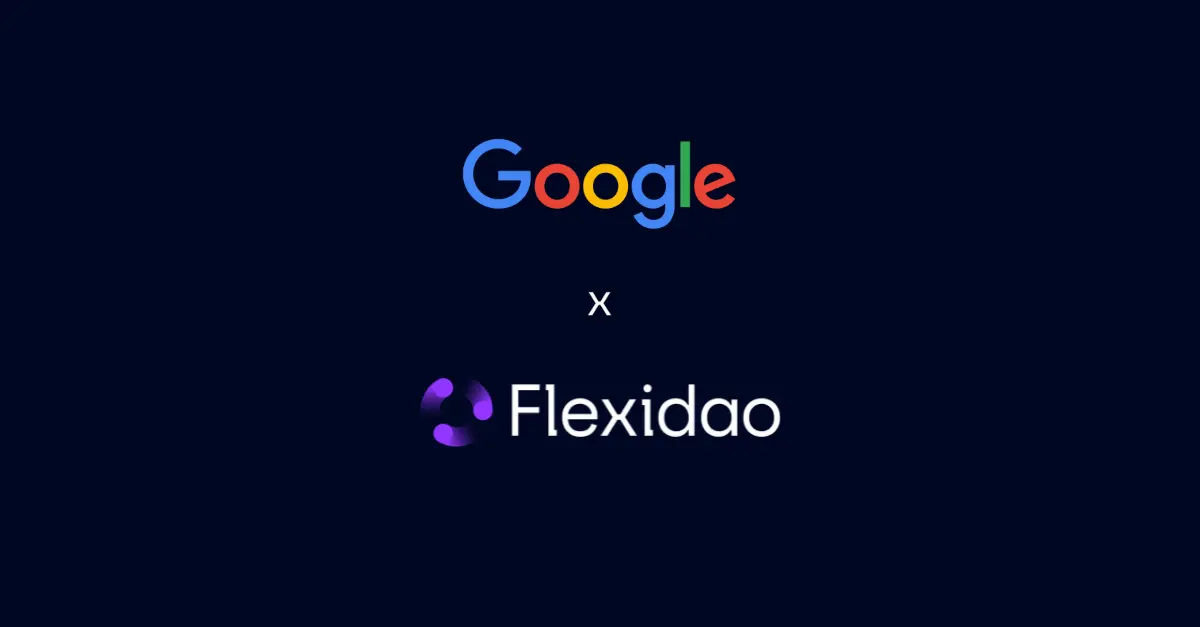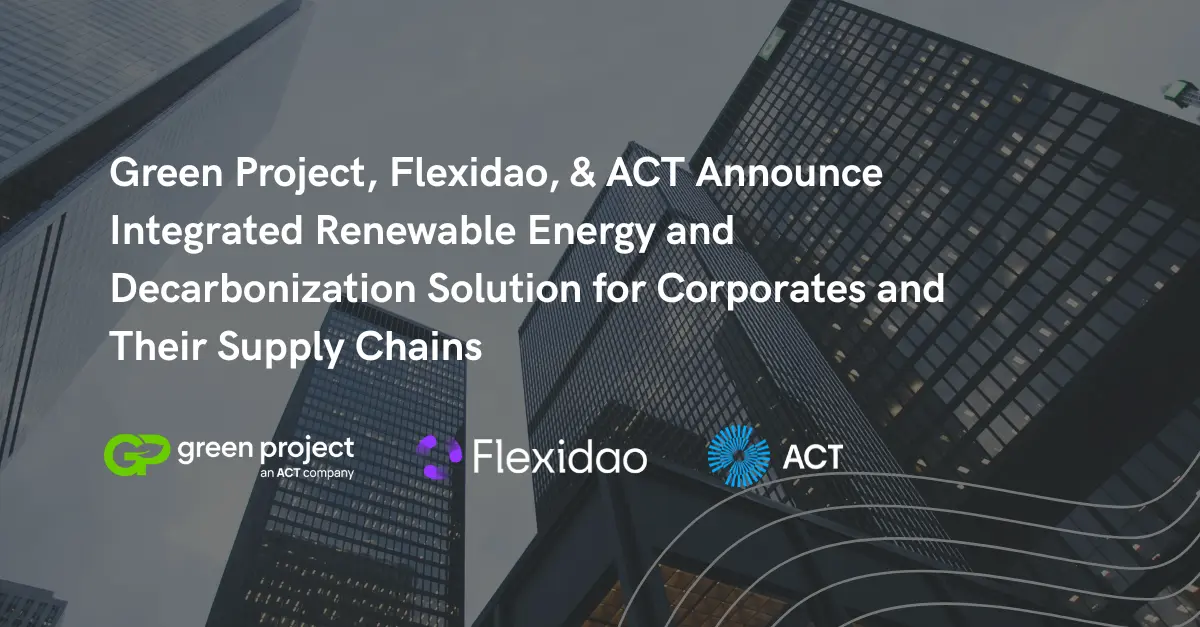How Can Corporates Ensure a More Impactful Renewable Energy Procurement
How Can Corporates Ensure a More Impactful Renewable Energy Procurement
Ensure impactful renewable energy procurement with Flexidao's strategies and advanced energy management solutions.
Corporations are buying more renewable energy than ever before. More than 220 companies have pledged to 100% renewable commitments—the main driving factors being the decrease in costs, stakeholder pressure on sustainability, and regulatory trends.
Green Energy Not Equally Green In Renewable Energy Procurement
Today, sustainability leaders are focusing on making a more impactful renewable energy procurement. The hot topic now is purchasing the type of renewable energy that can significantly impact the energy transition. Ten years ago, a building owner could clarify if it had energy efficiency solutions installed or not—a binary choice. After reaching industry maturity, energy efficiency labels have been imposed, becoming a more sophisticated field. This same level of sophistication is now arriving in the renewable energy space.
Companies can purchase different renewable energy products: (1) unbundled energy attribute certificates, (2) green energy tariffs from utilities, (3) Power Purchase Agreements - long-term bilateral agreements directly with the energy producer, and (4) producing their own electricity on-site.
Each of these renewable energy products have a different level of environmental impact.
What are the most important parameters to achieve leadership in impactful renewable energy procurement?
Additionality
One critical parameter in selecting renewable energy sources is additionality: the extent to which the chosen sourcing mechanism stimulates investment in renewable energy by creating new renewable energy generation assets. For this reason, a direct link between an energy generation asset and a consumer is vital. Consumers need to know where their money flows: the ideal objective is newly built plants from project developers that reinvest profits. Consumers need to be ensured that the environmental benefits they’re paying for are legitimate and wouldn’t have been delivered otherwise.
Energy Attribute Certificates coming from old power plants that have already been funded put in question the reinvestment of those funds into new assets. This is connected with the second important criterion that corporates are looking after when ensuring a more impactful renewable energy procurement.

Proximity
Part of the EU Commission's Green Deal, the deal includes enabling cleaner air for a local area by replacing fossil fuel plants with renewable. Moreover, local economies and job creation are fostered, creating a more robust social impact case for a corporation. Consuming from local energy sources also helps distribution system operators to reduce grid congestions and therefore reduce costs.
At the present moment, EACs (Energy Attribute Certificates) already certify that the energy comes from a renewable generation plant. In some countries, it describes the location and the age of the plant. However, this information is not always easily accessible by the energy buyer. Often the data is stored in back-office registries managed by energy certificate suppliers. Excel files and calls are crossed between consumers and certificate suppliers, turning the process cumbersome and prone to errors. Therefore, checking additionality and proximity aren’t easy for corporates when buying green tariffs or unbundled energy attribute certificates.
Emissionality
Emissionality is the third most important parameter in assessing the sourcing options. Emissionality refers to the avoided carbon emissions from renewable energy sourcing. The carbon intensity of energy is a dynamic value that depends on several geographic, meteorological, temporal, and usage variables.
Nowadays, there is a big misconception that being powered by 100% renewable energy implies net-zero emissions. Today, any company can claim to be 100% renewable by merely buying an amount of Energy Attribute Certificates that equals their consumption (in MWh). The problem is that these certificates are not based on time: they don’t carry an hourly stamp.
At the end of the year, a company could calculate their final energy consumption and buy an equivalent amount of certificates for the lowest price, to testify that the same amount of renewable energy was injected in the grid somewhere, at some point in time.
These calculations rely on monthly or yearly average aggregated data, disregarding that electricity’s carbon content varies substantially throughout the day and depending on the location and weather conditions.
This is why sustainability leaders such as Google have already taken action to map out if they’re carbon-free every hour, despite being 100% renewable over the year.
Internet 24/7: Carbon-Free Energy Should Be Too

Other corporate examples, such as car manufacturer Daimler or telco giant Telefonica, also have secured 24/7 sourcing of renewables recently. Leading organizations such as RE100 have also published a guide on impactful renewable energy procurement with a longer list of case studies.
How can a company claim, prove, and communicate an impactful renewable energy procurement?
Requesting data transparency from the energy source to their energy supplier is one of the solutions. Despite the limitations of the Energy Attribute certificate system that was mentioned before, new technologies allow for direct traceability of energy to a production plant. Not as a substitution of a certificate, but as a transparent addition to it.
Tracking green electrons’ energy flow is impossible for physical reasons; all energy is mixed into the grid. However, it’s possible to match production data to consumption data in real-time digitally. A company could ensure that a solar plant located 50km away from their factory produced the exact 100kWh that the factory was consuming on a Monday at 2:00 pm.
This real-time data stream can include information on the location of the production asset, age of the plant, technology type, and CO2 emission factor of the grid in that hour. With this traceability, companies can make sure they know that their money is flowing into the investment of new plants in proximity. Only by having this hourly data transparency corporates can ensure zero-carbon energy sourcing. Of course, Energy Attribute Certificates are still received at the end of the month or year for regulatory compliance.
Energy Attribute Certificates Don’t Certify Energy on an Hourly Basis - Who is Doing That?

Hourly certification of renewable energy needs to be linked at the end of each month to an Energy Attribute Certificate. This granular certification can be done by human auditors manually, although the costs don’t compensate for the benefit.
For this reason, the adoption of distributed ledger technologies such as blockchain has gained traction in the market as the most cost-effective alternative to human certification of energy. This decentralized database can record a “digital unit of energy” produced (token). It can then ensure no double-counting in the transfer and the claim of that certificate to a consumer. Corporates get the peace of mind that any third-party can audit the immutable registry to check the correct environmental claims. Energy-efficient blockchains such as the Energy Web Blockchain - validated by large energy companies, regulators, and startups - are the most suited for such a use case.
Renewable energy traceability has gained popularity in the last few years among Fortune 500 companies, given the rise of sustainability leadership initiatives. FlexiDAO has been supporting them worldwide by tracking more than 3TWh per year of renewable energy directly from production plants, with an audit trail on the blockchain.
Needless to mention: all green energy sourcing that is on-site or connected by “direct cable” is the greenest option possible, and traceability isn’t required in those cases.
For all the remaining renewable energy products such as Unbundled Certificates or Green Energy tariffs, sustainability and energy managers can now ensure that they can obtain the necessary data transparency to claim additionality, proximity, and zero-carbon energy.


.webp)





